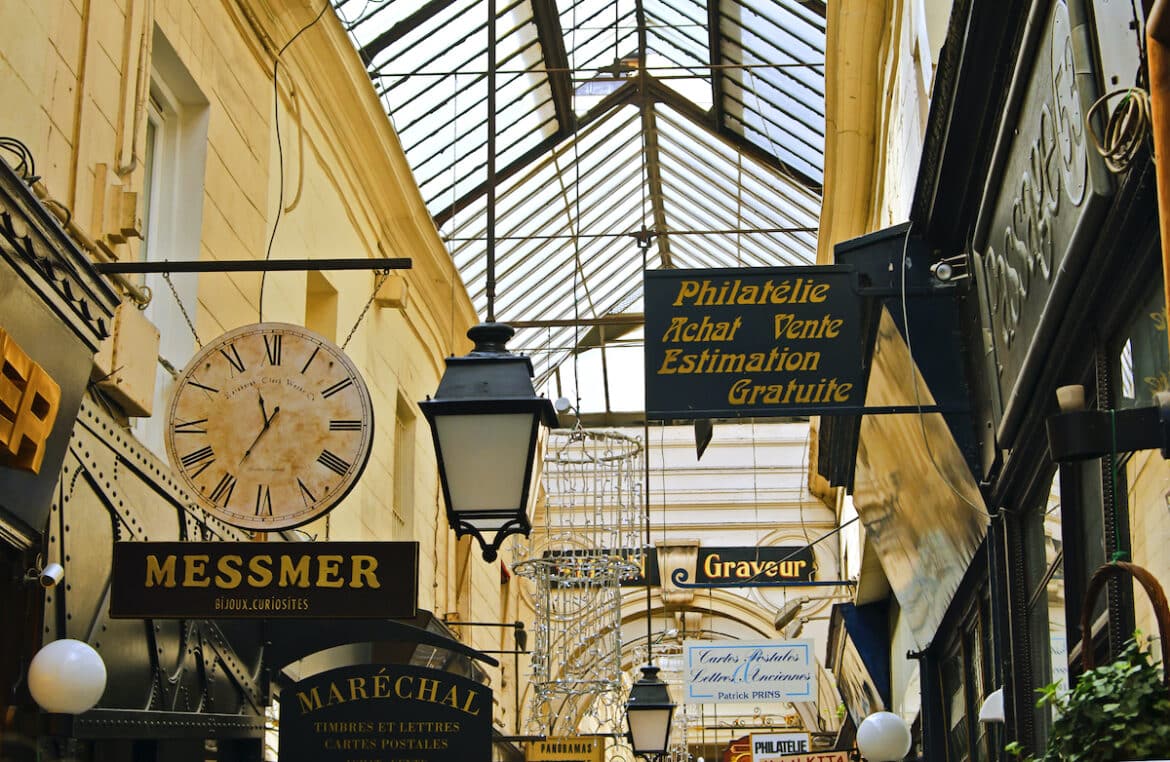Photo by ©Adeliepenguin | Dreamstime
It’s April in Paris which – as romantic as it sounds – does involve quite a bit of rainfall… Of course, we all know that April showers bring May flowers, so we can’t complain about the necessary precipitation. However, with the temperature on the rise, we are constantly in search of outdoor activities (that won’t also get us drenched).
SUBSCRIBE TO THE MAGAZINE
In the City of Lights, there couldn’t be a more perfect activity at this rainy time of year than to explore the city’s network of covered passages. Also known as covered arcades, these 18th and 19th century corridors that slice straight through blocks of connected buildings are one of Paris’s best-kept secrets, hidden in plain sight.
Read on to discover the history of these covered passages, and learn what you can find today in some of our favorites featuring antique shops, restaurants, and stunning architecture.
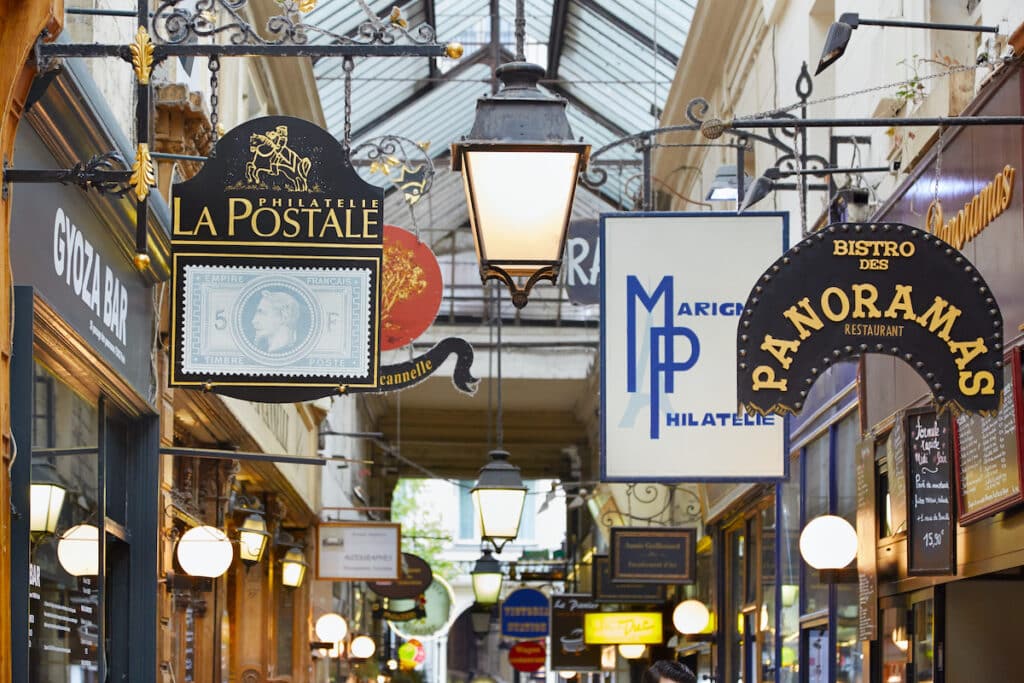
A bit of history…
Passages couverts trace their origins in Paris back to the late 18th century, a time of significant urban expansion and economic growth in the city. As Paris evolved into a bustling metropolis, its streets became increasingly congested with traffic, inciting the need for sheltered spaces for commerce. Merchants sought refuge from the unpredictable weather and the chaos of the streets, leading to the development of covered passages.
The earliest covered passages in Paris were simple structures consisting of narrow corridors lined with shops and illuminated by natural light filtering through glass roofs. But as the popularity of these passages grew, so too did their size and complexity. Wealthy developers spared no expense in creating opulent spaces that catered to the tastes of Parisian high society.
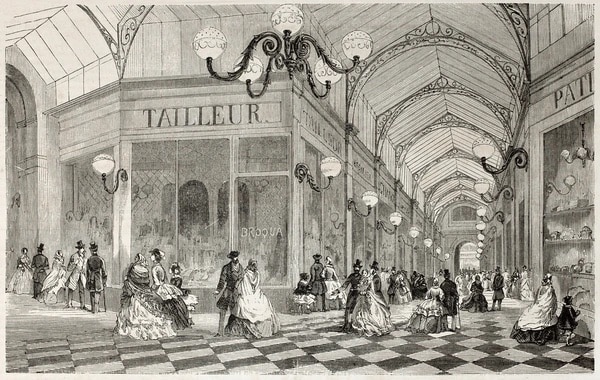
The concept of covered passages was not unique to Paris – similar structures had existed in other European cities for centuries. However, Parisian architects embraced the idea with enthusiasm, transforming these covered walkways into architectural marvels that reflected the city’s grandeur. Intricate mosaic tiled floors, stained glass domes, and wrought-iron gates were just a few of the arcades’ luxurious details.
Throughout the 19th century, the covered passages thrived as vibrant hubs of activity, attracting visitors from all walks of life. However, their popularity began to wane with the advent of department stores and modern shopping malls in the late 19th and early 20th centuries. Most of the 150+ passages fell into disrepair, their once-grand interiors fading into obscurity. However, efforts to preserve and restore the covered passages have been ongoing in recent years, and today, 24 still exist (and thrive).
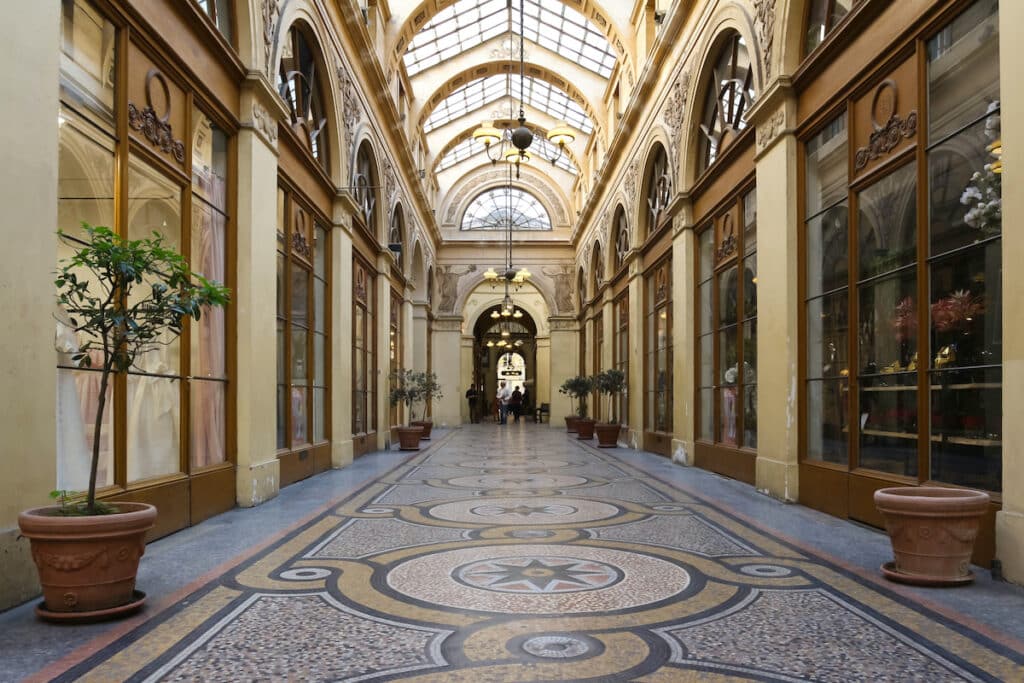
Visit the Covered Passages
Take a journey through these shopping centers’ storied pasts with a stroll down their corridors which feature dozens of shops and cafés still in business today. But be warned – stepping inside the passage might feel like stumbling into a Belle Époque time machine!
Here are a few of our favorites…
Galerie Vivienne
One of the most renowned covered passages in Paris is the Galerie Vivienne. Built in 1823 and listed as an official historic monument since 1974, this passage is located in the upscale 2nd arrondissement near the Jardin du Palais Royal – a fitting location for its royal appeal. The neo-classical Pompeian décor and colorful mosaic floors line the entire 176 meters (577 feet) of the passage, making eyes dance around the arcade as you stroll down the corridor.
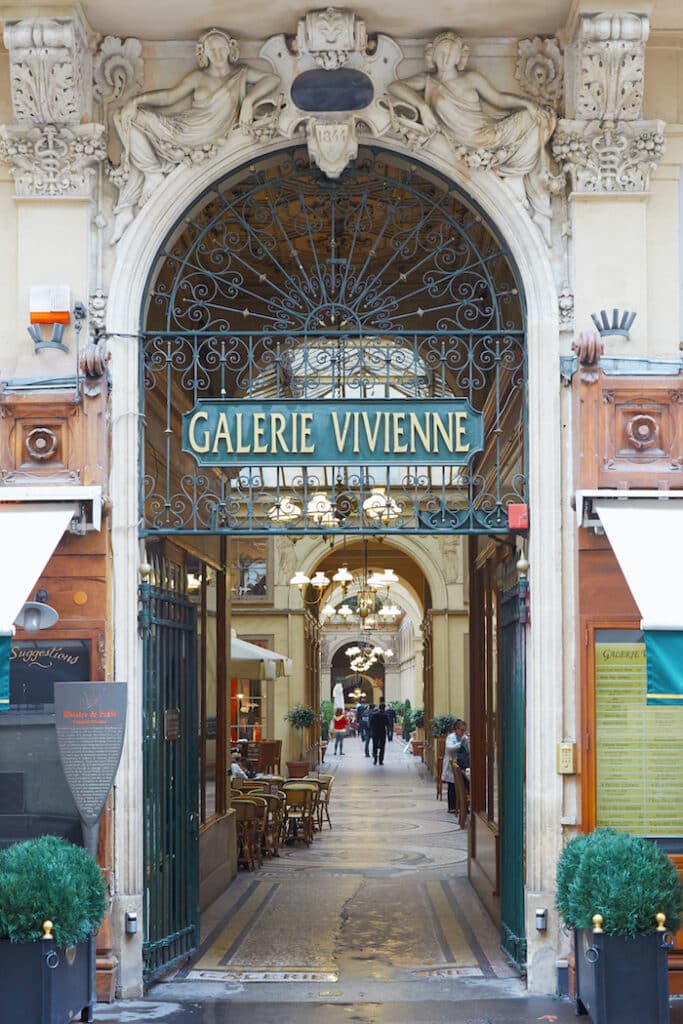
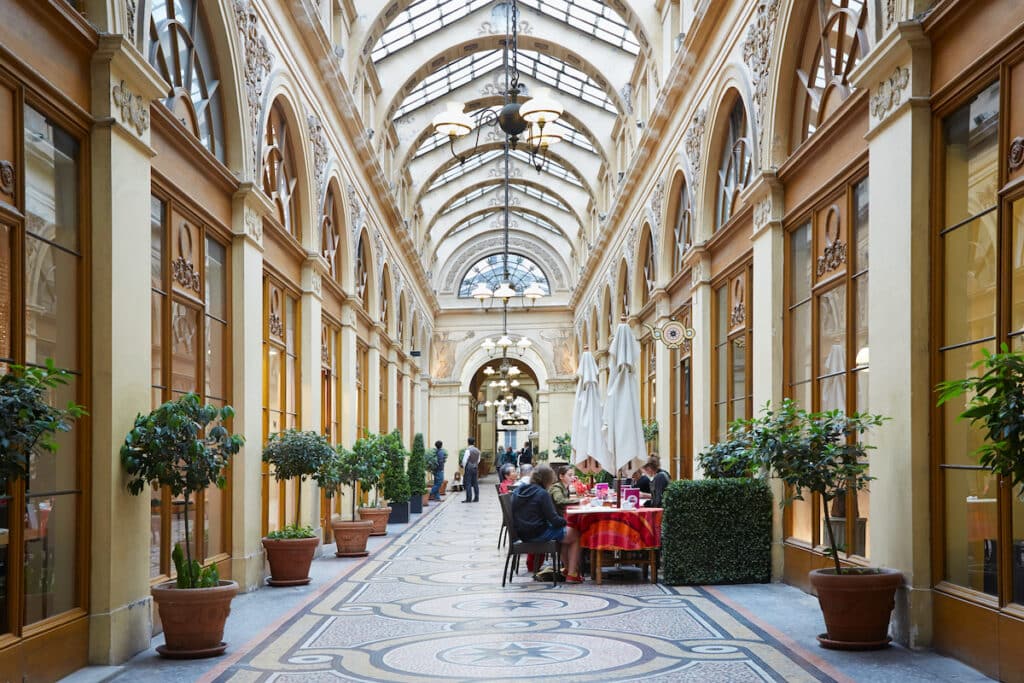
Underneath the elegant glass roof, you will discover a myriad of shops including art galleries, ancient bookstores, high-end fashion boutiques and interior decorators. One of the best things to do here is enjoy a unique gastronomic experience in one of the cozy restaurants, wine bars or tearooms.
Passage du Caire
Constructed in 1798, Passage du Caire is not only the oldest surviving covered passage in Paris, but also the longest and the narrowest! It was named after the Egyptian capital, in honor of Napoleon Bonaparte’s Egyptian Campaign which took place from 1798 to 1801. The entrance features Egyptian-inspired motifs, and the narrow halls at 2.6 meters (8.5 feet) wide are covered by simple glass ceilings that come together in a shape reminiscent of the pyramids.

Once a hub for the printing industry, today, it is almost entirely concentrated on fashion. Here you will find deals on clothing from foreign countries and cultures as well as vintage and affordable French apparel.
Passage des Panoramas
Another one of the oldest covered arcades, Passage des Panoramas dates back to 1799 and has fully retained its original character and lively shopping atmosphere. A veritable cabinet of curiosities, this passage has been entertaining curious shoppers and flâneurs for centuries. Not only is it home to many dealers of vintage postcards, knick-knacks, and – most famously – stamps, but it is also the site of a theater inaugurated in 1807 that is still in operation today.
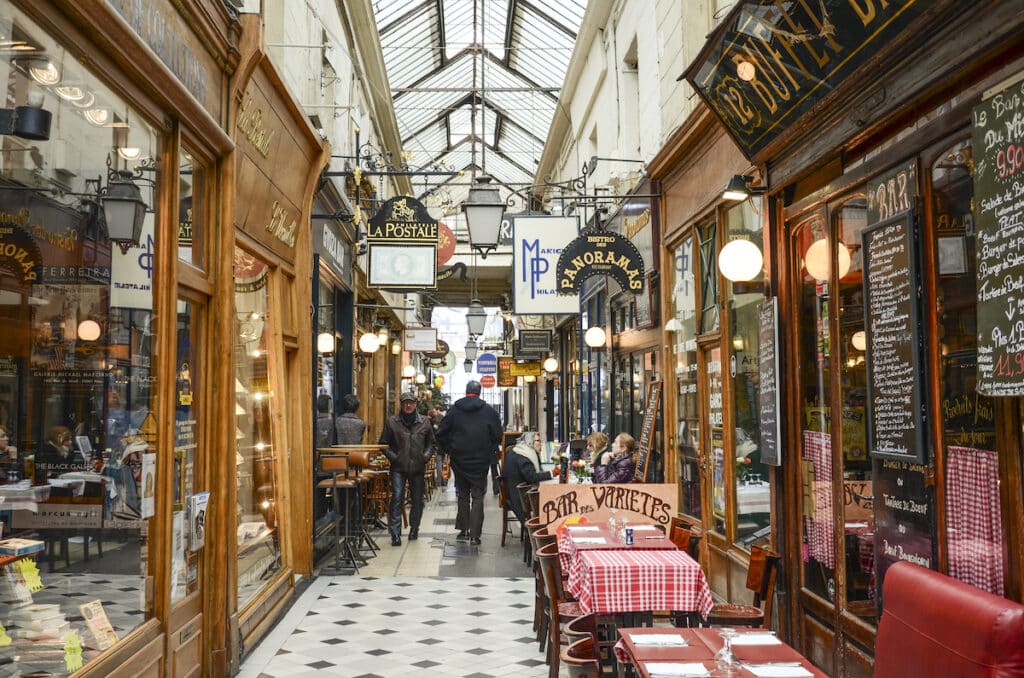
Visitors delight in the magical shops that serve as a charming time capsule for the Paris of yesteryear. It’s easy to spend a whole day among the wooden store fronts. Stop for a classic French meal at the restaurant Canard et Champagne or an exotic bite at the Gyoza Bar. Follow lunch with a performance at the theater and finish with dessert at the Marquis chocolate factory which hasn’t budged since 1818.
Passage Verdeau
Taking inspiration from Passage des Panoramas, the architect of Passage Verdeau created his namesake arcade in the same style in 1846. The wooden storefronts are bathed in light from the glass domed ceiling. While Verdeau was often overlooked – with passersby more attracted to the passage’s predecessors – the opening of a nearby auction house in the 1980s gave this shopping center a new lease on life once auctioneers started frequenting its antique shops.
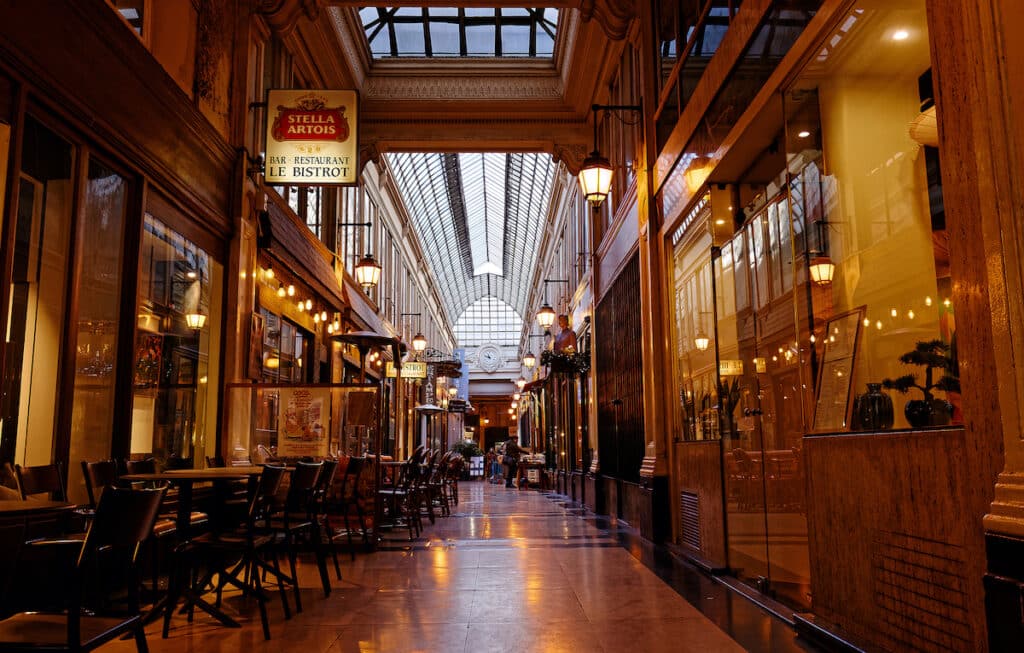
Today, the passage’s traditional French bistros are flanked by antique shops which continue to sell rare books, vintage prints and postcards, and old film cameras from every decade.
On your next trip to Paris, dip into one of these historic covered passages for an activity that welcomes curious shoppers and those wishing to take a stroll down into Paris’s past – rain or shine.
